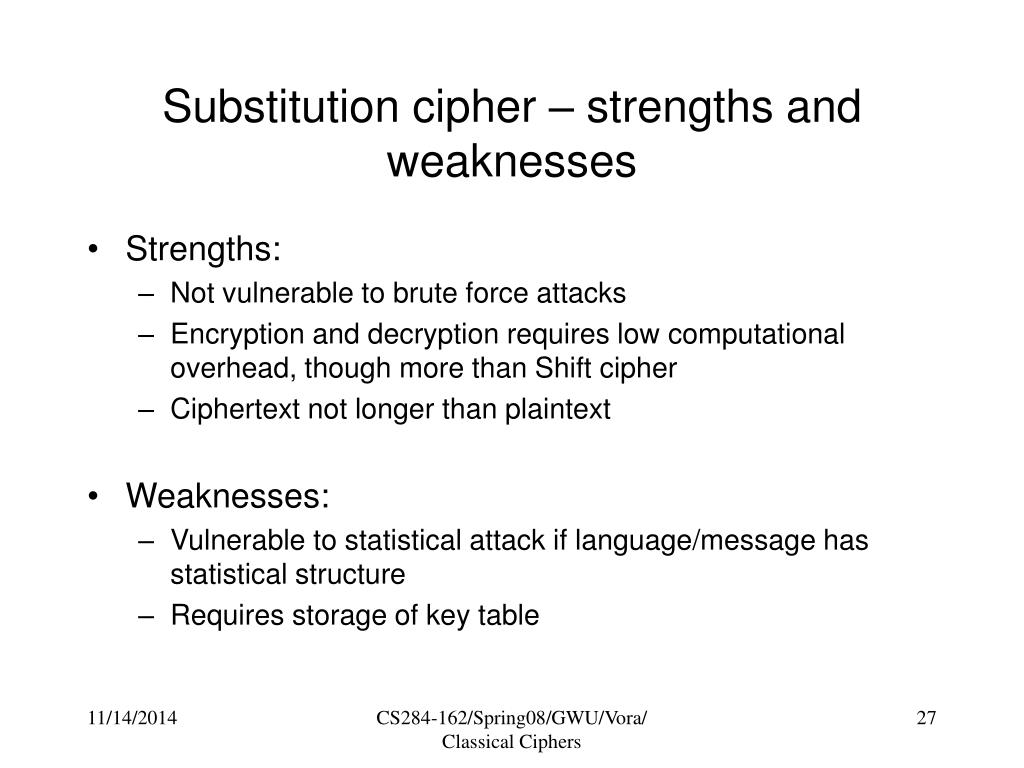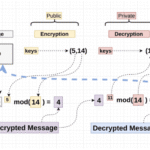In the fascinating world of cryptography, the robustness of a cipher is of paramount importance. Everyone has pondered at some point whether the secret codes we rely on are as unbreakable as we would like to believe. What makes a cipher breakable? Let’s delve deep into the myriad weaknesses that can render a cipher susceptible to decryption.
At its core, a cipher’s security can be compromised by a variety of factors, each with its own implications. These can range from mathematical limitations to human errors. It’s essential to understand not just how ciphers work, but also the vulnerabilities intrinsic to them. As we embark on this exploration, consider this playful question: if you were tasked with breaking a secret message, where would you begin?
One of the primary vulnerabilities in many ciphers stems from poor key management. A cipher typically relies on a secret key for encryption and decryption processes. If this key is not chosen wisely, or if it is frequently reused, the cipher becomes significantly weaker. For instance, in symmetric ciphers, where the same key is used for both enciphering and deciphering, if an adversary captures several encrypted messages, they may employ techniques such as frequency analysis to deduce the secret key. Key reuse leads to predictability, which is a cipher’s arch-nemesis.
Then, we encounter the concept of (ciphertext) redundancy. Simple ciphers often exhibit patterns within the encrypted text—patterns that can be exploited. For example, substitution ciphers replace letters with other letters. If the method of substitution is consistent, a skilled cryptanalyst can analyze the frequency of letters and discern which letters are being substituted, leading to a potential breakthrough. In languages, certain letters and combinations appear more frequently than others. Unsophisticated ciphers make it easy for savvy individuals to identify these trends.
Next, we turn our attention to the mathematical integrity of the algorithms employed. Most ciphers rely on certain mathematical principles. If the underlying mathematics is flawed, the security of the entire system is jeopardized. Consider a well-known cipher: the RSA algorithm. It relies heavily on the difficulty of factorizing large prime numbers. However, with advances in quantum computing, the mathematical principles underpinning RSA may one day be rendered obsolete. One must always ask: how future-proof is the cipher?
Moreover, ciphers are inherently tied to the methods of communication. In an era dominated by digital communications, interception of messages has evolved, creating new vulnerabilities. Even robust ciphers can be compromised if an adversary can access the encrypted data. This phenomenon is accentuated in situations where users employ weak passwords or use outdated software, resulting in an overall decrease in security. Are we inadvertently handing over the keys to our encrypted castles?
Additionally, human error cannot be overlooked. The strength of a cipher is only as good as the people employing it. For instance, inadequate training for personnel responsible for managing cryptographic keys can lead to disastrous consequences. Ciphers could be exposed through negligence, miscommunication, or simple oversight. This introduces a sociotechnical vulnerability to information security—a domain where the human element often proves to be the weakest link.
On the subject of user error, one notable issue is the concept of plaintext attacks. An attacker with access to both plaintext (the original message) and its corresponding ciphertext (the encrypted message) can study the two to crack the code. This is particularly true for systems utilizing the same keys for multiple messages. If an adversary can predict or replay messages, even the strongest ciphers can falter. Conversely, do we underestimate the lengths to which adversaries will go to understand our systems?
Let’s not forget about brute force attacks. This method, while simplistic, remains a legitimate threat. By systematically attempting every possible key combination, an attacker can eventually decrypt the cipher. The complexity of this task is proportional to the size of the key space. While longer keys increase security, they also require more computational resources. A balancing act emerges: at what point does security become too cumbersome for practical use?
In the end, the vulnerabilities inherent in ciphers pose a paradox. While complex algorithms and long keys can create formidable defenses, they are not invulnerable. The interplay of user behavior, key management, mathematical integrity, and technological advancements forms an intricate web that defines the cipher’s strength. As we navigate the future of cryptography, constant vigilance is crucial. Will we be able to adapt, or will the evolving digital landscape outpace our defenses?
In conclusion, deciphering what makes a cipher breakable requires a holistic understanding of its many weaknesses. From human errors to mathematical shortcomings and technological vulnerabilities, these factors contribute to a cipher’s overall security. In the race between ciphers and cryptanalysis, it is essential to remain one step ahead; after all, the sanctity of our secrets may very well depend on it. What steps are you taking to ensure that your encrypted messages remain secure?









Leave a Comment